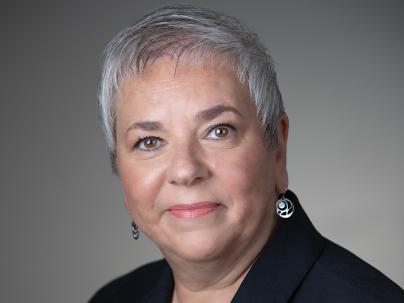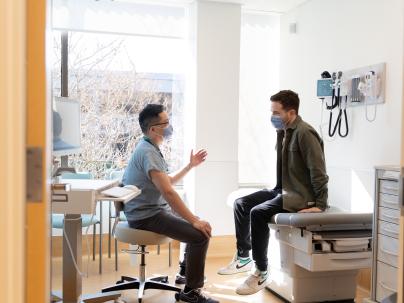Vancouver Coastal Health Accessibility Plan
You can access our plan by scrolling down this webpage or by downloading an accessible PDF version of it.
On this page
- Download an accessible PDF version of the VCH Accessibility Plan to your computer or mobile device.
- Translations
- Territory acknowledgement
- Appreciation
- Accessibility statement
- Note about language
- How to provide feedback on this plan
- Board Chair and President and CEO message
- Executive summary
- Executive Summary - ASL
- About Vancouver Coastal Health
- Key terms and framework
- Our commitment to accessibility
- Accessibility work in progress
- What’s next
- Measuring progress
- Resources
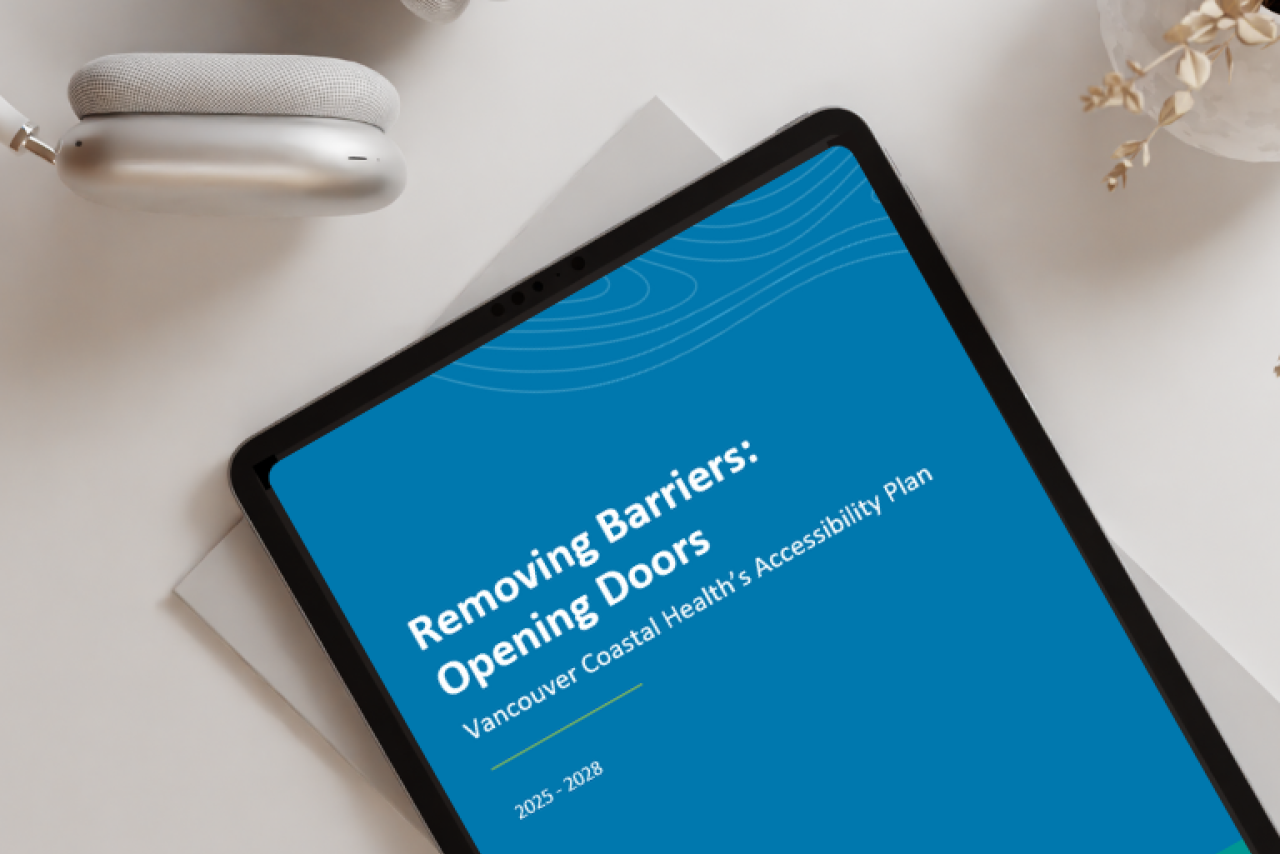
Download an accessible PDF version of the VCH Accessibility Plan to your computer or mobile device.
Download the planTranslations
This plan will be made available in multiple languages, including Traditional Chinese, Simplified Chinese, Punjabi, Spanish, Vietnamese and Farsi. An ASL translation of the Executive Summary is also available.

Territory acknowledgement
Vancouver Coastal Health is committed to delivering exceptional care to 1.25 million people, including First Nations, Métis and Inuit, and acknowledges that our places of work and the communities we serve are within the traditional and unceded territories of the Heiltsuk, Kitasoo-Xai’xais, Lil’wat, Musqueam, N’Quatqua, Nuxalk, Samahquam, shíshálh, Skatin, Squamish, Tla’amin, Tsleil-Waututh, Wuikinuxv and Xa’xtsa.

Appreciation
Vancouver Coastal Health would like to recognize and thank the accessibility committee and leaders working group members who participated and provided feedback during the development of this plan.
Accessibility statement
This accessibility plan is accessible to PDF/UA standards (Universal Accessibility). The standards help ensure that people with disabilities and people who use assistive technology can read this document. The goal of the PDF/UA standard is for everyone to be able to independently access information in a PDF document.
This report is also available in multiple languages. If you require any other formats, please email accessibility@vch.ca or call 604-708-5251.
Note about language
We understand that the language surrounding disability is constantly changing, and that people in the disability community have different preferences. As a small gesture to acknowledge these diverse preferences, this accessibility plan uses both "person-first" and "identity-first" language.
"Person-first" language puts the person before the disability, like saying "person with a disability." Some individuals prefer this language because they see their disability as a single part of who they are – and not what defines them. "Identity-first" language puts the disability first, like saying "disabled person." This language is preferred by individuals who see disability as a core part of their identity.
When talking directly to someone with a disability, we understand that it’s best to use their preferred language.
How to provide feedback on this plan
Share your feedback on this accessibility plan:
Board Chair and President and CEO message
Vancouver Coastal Health is made up of a team of more than 30,000 individuals supporting the delivery of equitable, compassionate health care to 1.25 million people throughout British Columbia.
We are guided by a vision of healthy lives in healthy communities, with a focus on creating safe, welcoming spaces for everyone. This means achieving positive patient outcomes and helping ensure equitable access to care for our patients, clients and their families.
The principle of accessibility and inclusion for all is woven into our efforts around equity, diversity and inclusion, and it helps ensure that our programs and services are available and accessible to everyone.
VCH’s accessibility plan outlines the work we are doing to identify, remove and prevent barriers to individuals receiving care at VCH. The plan aligns us with the Accessible British Columbia Act, with an aim to provide the best possible care for our patients, clients and residents, and to improve accessibility for health-care providers so they can bring their whole and best selves to caring for the communities we serve.
We understand that barriers to access exist, and we are dedicated to advocating and actioning change to make health care a more accessible and inclusive environment to better meet the diverse needs of our patient population and their families.
We acknowledge there is still much more work to do to improve accessibility at VCH – we take this responsibility seriously and this plan reinforces our commitment to that goal.
Executive summary
Vancouver Coastal Health is committed to removing and preventing barriers for everyone we interact with. By prioritizing accessibility, we can deliver better care. With more work to do, this accessibility plan is a major step towards the future vision for VCH, which is a diverse, equitable and fully inclusive organization. Aligned with, and in support of, the Accessible British Columbia Act, VCH will be implementing comprehensive strategies to identify, address and prevent accessibility barriers.
By fostering a culture of accessibility and inclusion, VCH strives to create a health-care environment where all individuals can access and deliver services without obstacles.
Our accessibility plan and approach are informed by key terms and concepts including the Disability Justice Framework, Indigenous cultural safety, intersectionality, social determinants of health, social model of disability and more. We have also aligned our work with other provincial, national and global commitments to accessibility and inclusion.
To support meaningful, achievable and sustainable change, this initial accessibility plan focuses on understanding and addressing barriers that impact the health-care community. This includes patients, staff and medical staff, visitors, students and volunteers with disabilities.
We are focusing on the built environment, information and communications, delivery of services and employment standards outlined within the Act and the transportation, health, education and procurement standards will be a part of future updates. VCH formed an accessibility committee of staff and medical staff, including staff with disabilities as well as a leaders’ working group. Together they will identify solutions and remove barriers.
Our next steps focus on awareness-building and further engagement with the community to identify barriers to advance our accessibility efforts at VCH. Following the launch of this accessibility plan, VCH will engage underrepresented members of the communities we serve to identify further opportunities to address barriers and improve accessibility. Focused engagement will help us centre the voices of community members with disabilities.
Key actions include setting up an external advisory committee, developing training programs for staff and medical staff to address key barriers related to accessibility and creating a barrier identification tool so that staff and members of the communities we serve can provide feedback on the barriers they experience or witness when interacting with the organization.
We are committed to accessibility and continuous quality improvement to provide equitable care to all. We will continually evaluate our progress on accessibility, reviewing this plan every three years. VCH will also provide a progress update as part of the annual Impact Report, which will be available on vch.ca.
Executive Summary - ASL
The ASL Executive Summary is available in English.


About Vancouver Coastal Health
VCH supports healthy lives in healthy communities – serving Vancouver, Richmond and the North Shore, the Sea to Sky corridor, the Sunshine Coast and the Central Coast. We provide specialized patient care with the following services:
- Acute care, including emergency departments, inpatient care, surgery and ambulatory care
- Community health, including home health, mental health and substance use, public health and health protection
- Long-term care and associated services, such as adult day programs, palliative care and respite care
- Primary care, including clinics and urgent and primary care centres
At VCH, we strive to create equitable access to care – while being a great place to work.
Values
Our values guide our everyday behaviour. They help us work towards a common purpose – to deliver an exceptional care experience for all.
-

We care for everyone
We believe that being caring is at the heart of what we do, caring for our patients, their families, our colleagues and ourselves.
-
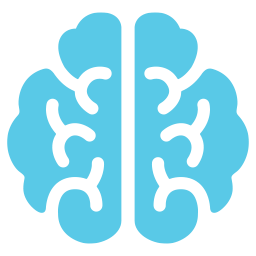
We are always learning
We believe in staying curious, always open to innovative ideas to improve health care.
-

We strive for better results
We believe in achieving better results across all functions of health care, leading to better patient outcomes and improving health care.
Pillars
Our four pillars guide us in our commitment to delivering safe, high-quality and equitable care.
-

Indigenous Cultural Safety
Committing to reconciliation and learning, and providing the best care informed by the history and culture of Indigenous Peoples.
-
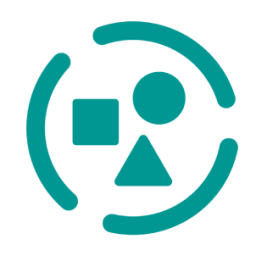
Equity, Diversity and Inclusion
Promoting a sense of belonging where we can bring our whole selves to VCH.
-

Anti-Racism
Creating a community where we dismantle attitudes, practices and processes that impact people based on their race or ethnicity.
-

Planetary Health
Restoring, stewarding and conserving healthy ecosystems for generations to come.
Key terms and framework
Definitions
To provide a basis for a common understanding, here is a list of definitions for the words frequently used in this plan.
-
Disability
According to the Accessible British Columbia Act, disability occurs when an impairment interacts with a barrier, limiting a person's ability to fully and equally engage in society.
VCH recognizes the definition in the Act, and we note that when we talk about barriers at VCH, we seek to create full and equitable access to health-care services for the communities we serve.
This definition emphasizes the importance of addressing and preventing barriers that people may face. It shows how VCH can play a vital role in shaping how the communities we serve experience disability when interacting with our organization. By identifying and removing barriers, VCH can make our spaces and services more inclusive and accessible.
-
Impairment
The Accessible British Columbia Act describes impairment as a physical, sensory, mental, intellectual or cognitive condition. Impairments may be permanent, temporary or episodic.
-
Barrier
According to the Accessible British Columbia Act, a barrier is anything that hinders the full and equal participation of a person with an impairment. At VCH, a barrier is anything that hinders full and equitable participation in our health care services.
The Act also describes how barriers can arise from various sources, including:
- Attitudes – for example, if a medical staff person has the belief that people with disabilities are less capable of making decisions about their own care
- Information, communication or technology – for example, if a health-care consent form is only provided in a format that uses small print and complex language
- Physical environment – for example, if a clinic does not have accessible parking, wheelchair ramps and/or automatic doors
- Policies and practices – for example, when front-line medical staff are not trained in accessibility and accommodations for people with disabilities
Barriers can also be influenced by intersecting forms of discrimination.
-
Accessibility
Accessibility is a deliberate and proactive effort to identify, prevent and remove barriers for people with disabilities. At VCH, we see accessibility as the effort to create equitable access in different ways, including the built environment, information and communications, delivery of services and employment.
This helps to ensure patients, staff and medical staff, visitors, students and volunteers with disabilities are valued as part of the health-care community. We want to foster an inclusive health-care community where differences are celebrated, and disability experiences enriches understanding, decision-making, planning and problem solving.
Frameworks
The following key concepts guided the development of this accessibility plan:
-
Centering voices
To centre voices means to prioritize the perspectives and experiences of people who are often overlooked or underrepresented. It's about actively listening and ensuring voices are heard and valued in discussions. This is especially important when we are making decisions.
This accessibility plan is the result of our close engagement with VCH’s accessibility committee, which includes staff members with disabilities. In our next phase of accessibility work, our community engagement will also look at centering the voices of patients and other community members with disabilities.
-
Disability Justice Framework
The Disability Justice Framework recognizes that systems are not neutral. Systems have the power to enable some individuals while at the same time creating intersecting and often, multiple barriers for people with disabilities. Using the Disability Justice Framework as a guide, this plan highlights our efforts to identify and address barriers within the VCH system.
-
Indigenous Cultural Safety
We are committed to fostering cultural safety for Indigenous Peoples by:
- Applying VCH’s Indigenous Cultural Safety Policy
- Integrating the principles of cultural humility, respect and reconciliation into our services
Aligned with VCH’s strategic priorities of equity, diversity and inclusion, we recognize and affirm Indigenous Peoples’ inherent rights and cultural safety. This commitment is grounded in the principles of the United Nations Declaration on the Rights of Indigenous Peoples (UNDRIP) and our dedication to creating an environment where individuals can access care that is both equitable and culturally affirming.
Incorporating Indigenous cultural practices, knowledge and leadership into our health services is essential to creating an accessible and inclusive health care environment. This effort aligns with VCH’s broader commitment to anti-racism and cultural humility. Practicing this commitment can foster trust and helps ensure that care respects the identity and lived experiences of patients.
-
Intersectionality
People with disabilities come from different backgrounds including race, ethnicity, gender, age, socioeconomic and others. These overlapping factors can influence and shape individuals’ experience with barriers.
VCH understands that every person with a disability who engages with our organization has a unique and individualized experience. As we work to identify, remove and prevent barriers, we recognize we need to apply an intersectional lens to ensure diverse access needs are met.
-
Social determinants of health
There are many personal, social, economic and environmental factors that influence wellbeing and health outcomes. These are social determinants of health. Some groups – like people with disabilities – can have less access to the factors that enhance positive health outcomes, like transportation, employment, social inclusion and more. These experiences are a result of systems and structures that produce inequity.
We understand that disability and the social determinants of health are interconnected. With this plan – and our future accessibility efforts – VCH will explore how the social determinants of health impact the experience of barriers for the communities we serve.
-
Social model of disability
The social model of disability recognizes that disability originates from the barriers in society. In contrast to the medical model, which sees disability as a problem with the individual’s body or mind, the social model expects society to be more accessible. For example, if a person who uses a wheelchair cannot enter a building because there is no ramp, the social model indicates that the building’s stairs are disabling, and not the wheelchair. The building can change to be accessible to everyone.
In alignment with the social model, this plan is focused on identifying, removing and preventing barriers that hinder full participation for everyone.
-
Trauma-informed practice
Trauma-informed practice means approaching our work with an understanding that many people have experienced trauma, and these experiences can impact their overall health. According to Statistics Canada, about 63 per cent of adult Canadians have gone through at least one traumatic event. Additionally, Black, Indigenous, people of colour and/or people with disabilities and other underrepresented communities experience higher rates of trauma.
Trauma refers to experiences, such as abuse, violence, accidents, personal loss or natural disasters, which exceed the coping capacity of an individual. Other types of trauma, such as medical trauma — which is defined as a personal psychological and physiological response to contact with a medical setting — can lead to adverse effects on health outcomes.
Therefore, at VCH, adopting a trauma-informed approach is an important step in preventing re-traumatization and for providing supportive, inclusive and accessible health-care services and employment.

Our commitment to accessibility
VCH is committed to creating a diverse, inclusive and accessible organization. To accomplish this goal, we recognize that more work needs to be done to support people working in the organization and those who access our services.
To support meaningful, achievable and sustainable change, this initial accessibility plan focuses on understanding and addressing barriers that impact the health-care community. This includes patients, staff and medical staff, visitors, students and volunteers with disabilities. The processes and solutions developed will improve staff and medical staff experiences. They will also prepare us to address the barriers experienced by patients, visitors, students and volunteers with disabilities, which we will closely consider in the next phase of our accessibility work.
We believe a phased approach will help us focus our resources and ensure we have the capacity for meaningful change. We aim to build capacity for accessibility that supports our work as we broaden our focus. This strategy helps ensure that our commitment to accessibility is sustainable and paves the way for lasting, impactful change that can be expanded over time.
Our alignment with other accessibility commitments
VCH also recognizes provincial, national and global commitments to accessibility and inclusion.
-
Accessible British Columbia Act
The Accessible British Columbia Act is British Columbia’s accessibility legislation. Its requirements and principles frame much of the work that went into the development of this plan.
Requirements
Under the Accessible British Columbia Act, prescribed organizations, like health authorities, must meet three key requirements:
- Establish an accessibility committee to identify, address and prevent barriers
- Create an accessibility plan to outline how the organization will identify, remove, and prevent barriers
- Set up a public feedback process that allows members of the public to share their experience with barriers when interacting with the organization
Principles
The Act outlines six guiding principles for developing an accessibility plan:
- Inclusion – ensuring equitable access to opportunity, participation and access
- Adaptability – recognizing that needs change and accessibility efforts are on-going
- Diversity – recognizing the valuing a wide range of experiences, identities and perspectives within the disability community
- Collaboration – working together with the disability community to design, implement and improve accessibility
- Self-determination – ensuring people with disabilities are driving decision-making around accessibility efforts
- Universal Design – creating products, environments and experiences that are accessible and usable for the most people possible
-
Accessible Canada Act
The Accessible Canada Act is a federal law aimed at creating a barrier-free Canada. It builds on existing human rights laws by focusing on the identification, removal and prevention of barriers for people with disabilities. Requirements and definitions in the Accessible Canada Act are like those in the Accessible British Columbia Act.
VCH has applied these requirements and principles in the development of this plan – and we will continue to follow them as this plan is further developed and implemented.
-
Convention on the Rights of Persons with Disabilities (CRPD)
The United Nations Convention of the Rights of Persons with Disabilities was adopted in 2006. It is an international treaty that protects the rights and dignity of people with disabilities. The treaty ensures that people with disabilities have access to public health facilities and resources and can seek and receive information in an equitable way.
We strive to embed values of self-determination and empowerment into our services, promoting full participation and inclusion for all individuals.
-
United Nations Declaration on the Rights of Indigenous Peoples and accessibility
The United Nations Declaration on the Rights of Indigenous Peoples (UNDRIP) protects the rights of Indigenous Peoples around the world – providing a framework for reconciliation, healing and peace. It helps to ensure that Indigenous communities are treated fairly and with respect. In Canada, we have the United Nations Declaration on the Rights of Indigenous Peoples Act, which mandates the Declaration’s implementation.
As VCH continues its journey of truth and reconciliation, we remain committed to upholding the requirements of the Declaration and addressing the clear actions outlined in the health-care report - In Plain Sight: Addressing Indigenous-specific racism and discrimination in B.C. health care.
As outlined in the In Plain Sight report, the experiences of racism, bias and discrimination deeply affect Indigenous Peoples’ interactions with the health-care system, hindering their access to equitable care. By addressing these barriers, we aim to ensure that Indigenous Peoples receive culturally safe, responsive care that respects traditional healing practices as part of their care journey.

Accessibility work in progress
This section highlights progress we have already made towards improving accessibility. All these initiatives focus on person-centred care and many of these initiatives are ongoing and will continue to develop. VCH is focusing on the built environment, information and communications, delivery of services and employment standards outlined within the act and the transportation, health, education and procurement standards will be a part of future updates.
Staff and medical staff accessibility committee
In summer 2024, VCH formed an accessibility committee of staff and medical staff. In alignment with the requirements of the Accessible British Columbia Act, more than half of the committee’s membership has a disability (70 per cent) or are individuals who support persons with disabilities (20 per cent) and are Indigenous (10 per cent). The committee also aims to reflect diverse professional experience and lived experience from other groups traditionally underrepresented in governance structures.
The committee plays a critical role in helping VCH identify and address accessibility barriers. Their involvement goes beyond highlighting accessibility issues. They help VCH understand and address the personal and profound impacts barriers have on people’s lives. The committee has been instrumental in shaping our accessibility plan, ensuring it is informed by and reflective of lived experience.
Before the committee begins their barrier identification work, the staff and medical staff committee completed barrier identification training. This training covered barriers as defined by the Accessible British Columbia Act. It was designed to advance members' expertise and familiarize them with the requirements for identifying and removing barriers under B.C.'s provincial accessibility legislation. In the near term, the committee will have a chance to share accessibility barriers they have noticed or experienced at VCH.
Leaders’ working group
In 2024, VCH created a leaders’ working group, a team focused on improving accessibility across departments. The group includes senior leaders who have a clear understanding of their areas' strategic and operational plans, and how accessibility can be integrated into these plans. The working group helps VCH identify and prioritize actions for improving accessibility.
Working group members have knowledge and passion for improving accessibility, with some group members bringing lived experience of disability.
VCH teams represented in the group include:
- Anti-racism
- Clinical equipment and supplies
- Communications, equity and partnerships
- Environmental services
- Equity, diversity and inclusion
- Facilities management
- Indigenous health
- Language services
- Medical – nurse practitioners, physician relations
- Operations
- People health
- Policy
- Professional practice
- Support and inclusion for people with disabilities
- Talent development and career pathways
- Transformation
Like the staff and medical staff accessibility committee, the leaders’ working group completed barrier identification training. The leaders have also been working with their teams to gather information about known accessibility barriers that impact staff. Together with the committee, the working group will identify solutions and remove barriers.
With all VCH accessibility initiatives, the focus is to:
- Build capacity across departments
- Engage members with disabilities of the communities we serve, helping to ensure their input guides barrier identification and removal
By focusing on the following standards, our aim is to build accessibility in a sustainable way that reflects the diverse experiences of disability that impact our patients and clients.
Built environment
The built environment standard should help ensure health-care facilities are easy to enter and navigate and include appropriate accessibility features and culturally safe practices. We are adding the following features within our facilities:
- Inclusive washrooms
- Change room signage
- Improved accessible parking
- Wayfinding in health-care sites
- Automatic door openers
- Connecting ramps and sidewalks
- Modern elevator infrastructure
We are also bringing more focus to accessibility through universal design in the ways we plan new and enhance existing buildings.
Delivery of services
The delivery of services standard is where all health-care programs and services should be designed to be accessible by default and ensuring flexibility and responsiveness for when things change. The standard includes events, activities, programs, attitudes, interactions and more, across both physical and virtual environments. Some examples at VCH include:
Attitudes
VCH is deeply committed to advancing the work of equity, diversity and inclusion to help increase awareness and understanding of the importance of diverse teams, to support greater inclusivity and to create safer environments throughout our region so patients, clients and residents can receive care and for staff and medical staff to provide exceptional care.
Policy review
We carefully review VCH policies regularly to support the promotion of equity, diversity and inclusion as well as Indigenous cultural safety throughout the continuum of health-care services.
Deaf Well-Being Program
Since 1991, the Deaf Well-Being Program has offered accessible mental health services for Deaf, Hard of Hearing, Deaf-Blind clients and in some situations, for their families.
Employment
The employment standard helps promote equitable access to employment and create a work environment that is barrier-free. We offer the following services:
-
Accommodations
Over the past 15 years, the VCH accommodations team has been supporting staff to access the support they need to effectively do their jobs. VCH is part of the collective bargained Enhanced Disability Management Program which supports employees remaining at work or returning to work following an occupational or non-occupational injury or illness.
The People Heath team provides disability management services to VCH employees and includes a placement team, that supports employees who require a medical accommodation in their own position or a new position, that meets their abilities, skills and qualifications.
-
People wellness
The People Wellness team provides staff supports and include staff training on psychological health and safety in the workplace. As well, the VCH Employee and Family Assistance Program helps staff and their families find solutions for a range of life's challenges through a variety of counseling, health and wellness services.
-
Respectful workplace
The Respectful Workplace team is committed to creating supportive and respectful work environments for staff. They offer comprehensive support through conflict resolution services, accessible reporting methods and educational resources. All of this is aimed at fostering a culture of respect and inclusion in the workplace.
-
People well-being and psychological health and safety
VCH provides resources and staff training on psychological health and safety in the workplace. This includes psychological health and safety toolkits with resources and videos and a new e-learning module for staff and medical staff and leaders, and microlearning modules on the 13 psychological health and safety factors. Other staff supports provided include webinars, therapy dog visits, meditation apps, fitness opportunities and wellness grants.
-
Equity, diversity and inclusion resources and training
VCH is developing a specific equity, diversity and inclusion and anti-racism policy and continues to review policies and standard operating procedures through an EDI lens.
To increase awareness of EDI and reduce bias and stigma, foundational training is offered to all staff and medical staff. This training covers bias, allyship, using a trauma-informed lens and other relevant topics. The aim of this training is to increase understanding of inclusion literacy, trans inclusion, unconscious bias and cross-cultural competency. While some of the training is through workshops, there are additional opportunities for learning through town halls, articles, lunch and learns, as well as resources available to staff and medical staff through the VCH library.

What’s next
This section outlines the next steps for VCH. We will focus on awareness-building and further engagement with the community to identify barriers to advance our accessibility efforts at VCH.
Community engagement
Following the launch of this accessibility plan, VCH will engage underrepresented members of the communities we serve to identify further opportunities to address barriers and improve accessibility. Focused engagement will help us centre the voices of community members with disabilities that we serve.
External accessibility advisory committee
In 2025, we will form an external accessibility advisory committee. This committee will provide another way for VCH to hear from the people most impacted by accessibility barriers, including:
- Patients, clients and residents with disabilities
- Visitors and volunteers with disabilities
- Indigenous community members with disabilities
- Disability-serving community organizations
Engagement with this committee will provide VCH with further insight and guidance for our accessibility efforts.
Staff training
We will develop training programs for staff and medical staff to address key barriers related to accessibility. We will also give our internal leaders the necessary skills and knowledge to create and promote a culture that supports diverse needs of our workforce. Our goal is to empower staff and medical staff to create an environment where everyone can thrive and show up as their full selves, and to increase the representation of leaders with disabilities.
Gathering feedback: barrier identification tool
VCH is developing a barrier identification tool so that staff and community members can provide feedback on the barriers they experience or witness when interacting with the organization. Information on barriers will be reviewed by the staff and medical staff accessibility committee and leaders’ working group and shared with appropriate departments for consideration and resolution. Regularly reviewing collected data will allow us to identify patterns and new challenges, so we can make improvements based on facts and stay flexible in meeting the needs of our community.
Further information gathering
Various departments are working together to collect information on barriers at VCH and will be added to the barrier identification tool. Departments collaborating on this ongoing work include People (human resources), Communications, Equity and Partnerships, Patient Care Quality Office, Ethics Services and the Medical Practitioners’ Occupational Safety and Health group.

Measuring progress
To measure VCH’s progress on barrier identification and removal for patients and clients, all efforts will be tracked in the barrier identification tool. We will create quarterly reports based on progress – and share these reports with the leaders working group, staff and medical staff accessibility committee and the external advisory accessibility committee. Each group will discuss results in the report to recommend future efforts.
Progress updates
We are committed to accessibility and to continuous quality improvement to provide equitable care to all. We will evaluate our progress on accessibility, reviewing this plan every three years. VCH will also provide an annual progress update as part of the annual Impact Report. This report will be available on vch.ca.
Conclusion
VCH remains committed to removing and preventing barriers for everyone. This accessibility plan is part of our ongoing journey of becoming an increasingly inclusive organization and represents a significant milestone in becoming fully accessible. Your feedback is important, and we welcome questions and comments on the plan, which will help us continually improve as we monitor and evaluate our progress. Thank you for taking the time to learn with us as and we look forward to ongoing engagement.

Resources
We are committed to accessibility and offer a range of resources for individuals who may need extra support. These resources aim to remove barriers so that everyone has full and equitable access to our programs and services.
Find patient, client, resident, visitor and volunteer resources



